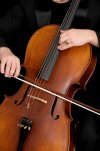With my Genelec 8340 monitors , theres is a possibility to use GLM to get the preferred sound you want, using eq and peq.
With most classical music, I only prefer some slight GLM correction below 200 Hz . I dont prefer any deviations from flat from 200-20000 Hz. Every instrument sounds more real with a flat frequency response in this area.
However - pop/rock music is another question - using the tunemethod when installing the speakers for best perceived bass pitch in the room, on most recordings I prefer + 1,5 dB ( Q=2 ) between 1-2 kHz and + 1,5 dB ( Q=2 ) at 8 kHz , with the usual GLM correction below 200 Hz .
This brings the clearest bass-pitch to me, with most of this kind of music, when using a ”flat” speaker like 8340.
Do you prefer a different equalisation with classical or rock/pop music , or is it the same on all music ?

With most classical music, I only prefer some slight GLM correction below 200 Hz . I dont prefer any deviations from flat from 200-20000 Hz. Every instrument sounds more real with a flat frequency response in this area.
However - pop/rock music is another question - using the tunemethod when installing the speakers for best perceived bass pitch in the room, on most recordings I prefer + 1,5 dB ( Q=2 ) between 1-2 kHz and + 1,5 dB ( Q=2 ) at 8 kHz , with the usual GLM correction below 200 Hz .
This brings the clearest bass-pitch to me, with most of this kind of music, when using a ”flat” speaker like 8340.
Do you prefer a different equalisation with classical or rock/pop music , or is it the same on all music ?

Last edited:
